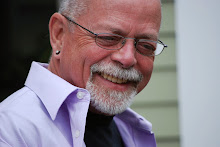Monday, May 26, 2014
The Normal Heart, again
Before I arrived in Boston in 1984, I didn’t know anything about AIDS, or, as it was called, Gay Cancer, or Gay-Related Immune Deficiency (GRID), before AIDS was settled on in 1985. Nobody else did either. We knew that it was fatal. And we knew that they didn’t know how long a person had from infection to dying.
The first years in Boston, I was writing about the summer of 1984 in Maine and the consequences of the murder of my friend. People here didn’t know what was making people sick. It could be passed sexually, but they didn’t know what virus caused it, and there was no test for infection. People understood about “bodily fluids,” but they didn’t know for certain which bodily fluids. Could you get it from a man’s tears? His saliva? And when the test was developed, people didn’t know what a “positive” meant. Did that mean a person was infected? Or did it just mean that a person had been exposed? The New York Native said on its front page, DON’T TAKE THE TEST.
I volunteered on the AIDS Hotline for the AIDS Action Committee in the Spring of 1985, and part of my motivation was the hope that I would learn better information about all the questions that were plaguing everybody. The thing I remember most about that period was how confusing it was. Our friends were dying, but we didn’t know anything about the disease that was killing them or about what was causing it. People were terrified. But they were also extremely angry. We knew it had something to do with sex, but didn’t know what. We were told about condoms, but everybody wanted to know how much you could trust a condom. Was it absolutely trustworthy to be a barrier to an exchange of body fluids? People called in to the Hotline wanting to know. And of course we didn’t know. We knew only partial answers. Aside from the fact that nobody had a very clear understanding of Acquired Immune Deficiency Syndrome, we—the gay men in Boston that I knew—were too much in the center of the disaster to understand how all the pieces of the national catastrophe came together. Our concentration was on ourselves. When there were just two of us, and the moment was quiet, the question was always, “What are you doing?” by which the other man meant, what are you doing to keep yourself safe? And our concentration was on our friends, who were suffering and dying.
The Normal Heart, which was produced on HBO last night, has the great gift of taking a chaotic, terrifying period and of giving it some order, even to giving it villains when, at the time, it had been very difficult to figure out who or what was causing this tragedy if it wasn’t ourselves. The Normal Heart organizes the history of the period and makes it comprehensible. Who were the villains? Who were the victims? What could be done? Larry Kramer understands what’s going on in the minds of people who are terrorized by their lives. The cast is led by Mark Ruffalo as Ned, Matt Bomer as Felix, Taylor Kitch as Bruce, and Julia Roberts as Emma. Superb, all of them.
Three books are worth mentioning: Randy Shilts’ And the Band Plays On—an attempt to pull together and make sensible a hugely important AIDS narrative; Steven Epstein’s Impure Science: AIDS, Activism, and the Politics of Knowledge—the changes in medicine effected by the AIDS activists like Larry Kramer and ACT UP; and John-Manuel Andriote’s Victory Deferred: How AIDS Changed Gay Life in America—a comprehensive history of the epidemic and its effect on the way medicine is practiced and the way gay people practice politics.
Other people may write more comprehensive histories, and Tony Kushner may have written a better play, but no one gets as well the fire in the belly of the people who were there in the beginning, in 1984. I’ve seen this production twice. It makes me weep each time.
So here it is: Larry Kramer’s The Normal Heart, premiered June 25, HBO, playing now in encore on HBO. The play is essential to a knowledge of the period 1981-1984, the beginning of AIDS.
